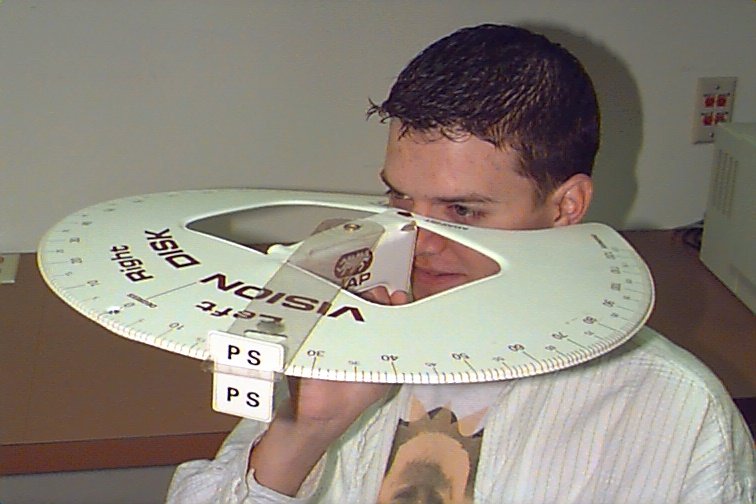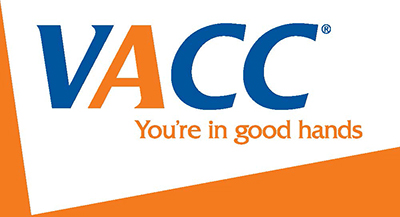Road safety and the science of behaviour change
- David Brown – Life Member AITPM and Director Driven Media
- Elizabeth Ampt –Director of Concepts of Change
- AITPM National Conference
- July 24-27, 2018
- Perth Australia
Abstract: If the answer is obvious what are we failing?
Using so-called behaviour change techniques to shape road safety messages is not new in Australia (e.g. Davidson et al, 2013) and elsewhere – particularly in the UK (Fylan and Stradling 2014). Most applications have been based on theories of intentions and attitudes.
However, the toolkit of behaviour change approaches is extensive and there is one specific approach (helping people to help themselves) which has had limited application in the road safety field. This discussion paper has been written to stimulate ideas about the way it could be used to enhance long term change to increase road safety – not necessaarily relying only on mass campaigns.
The paper commences by briefly outlining the voluntary behaviour change approach, then examines some current approaches which are found wanting and finally describes how it might be used in road safety applications as a holistic approach.
Finally, we will make a few suggestions on the future directions for this different approach as discussion points with professionals and the public.
1 Context
When you were growing up, did you ever hear an adult say “if I told you once I told you a thousand times”. While you may not see yourself as a recalcitrant child, there were clearly times when the message was not getting through. Yet the approach to getting you to “do the right thing”, was often just repeating the same lecture over and over again. And many campaigns in road safety and elsewhere tend to repeat this approach, often focusing primarly on education and awarenes.
While awareness and knowledge of the correct behaviours are a prerequisite for change, research in many fields has shown that this is not sufficient (e.g. Dahl S 2009).
It is not the purpose of this paper to elaborate on the gamut of all behvaiour change approaches, but rather to describe an approach which has led to significant changes in reducing car use, as well as water and energy use in Australia and to suggest how this might be applied to increasing road safety.
2 Voluntary behaviour change – active listening
The approach we describe is sometimes called voluntary behaviour change or ‘helping people to help themselves’ (Ampt, 2003). It embraces an active-listening, on-going approach that accepts that people must discover the influencers in their lives and develop their own solutions. This requires the discipline of not jumping into the middle of a discussion with our own ideas and solutions. The focus is on the person’s journey of discovery (learning by doing) not the presentation of our wisdom (e.g. Ampt and Ashton-Graham 2013).
Active listening that results in behaviour change can be described as in Figure 1 (Ampt 2003)
Voluntary behaviour change is defined as change that occurs when individuals make choices for personal reward without a top-down mechanism, regulation of any sort, or a feeling of external compulsion.
In the first instance, a person decides to make a change so that he or she will improve their personal life in some way. This can occur for a variety of reasons, although if it is true voluntary behaviour change, none of them is an external pressure from another person or medium. The reasons can include:
- Arriving at a point where the negative effects of an existing activity reach a certain level of intolerance
- Realising for the first time that ‘it is possible for me, as an individual, to change’
- Hearing of someone else who has changed – particularly someone who is trusted, respected or perceived to have similar values
- Experiencing a ‘change moment’ (e.g. new car, new job, new home, new partner, choosing to change goals)
- Feeling that a change is appropriate because it is fashionable
An example in road safety could occur when someone who has always thought they were ‘driving too fast to get the children there on time’ met someone at a book club[1] meeting who felt similarly, lived nearby, had children of the same age doing the same things and to share the trips to soccer and swimming – thus cutting the number of trips (and hassle) by half.
Then, when a decision to change is made, actual behaviour change is more likely if there are a number of options for change – for example, in reducing car use it could be the option for someone else to do the activity in the course of an existing journey, a mode change option, or even a non-transport option.
Since voluntary behaviour changes are always aimed to achieve a personal goal in terms of improvement of lifestyle, or behaviour that is more congruent with values, they are likely to be sustainable.
Behaviour change is then subject to reinforcement activities. These can occur in the form of further benefits that accrue to an individual in terms of their personal values, or in the form of an individual recognising the presence of supportive infrastructure changes.
Finally, because the behaviour change has had a positive benefit to the individual it is likely that they will tell others of the benefits (diffusion). Since we are more likely to practise diffusion in the company of trusted others, the message is more likely to lead to further change.
Naturally this approach benefits from a range of other parallel programs such as providing ‘tools for change’ (e.g. information, ideas of ways to change, regulation) using many of the paradigms from other behaviour change approaches such a framing message to reflect social norms, setting up situations of cognitive dissonance and so on.
3 Active listening in road safety – where did the idea come from?
Here we briefly note how we started the idea of using a different approach and what we have done to develop it as an alternative than the all too frequent approach of righteous indignation.
The voluntary behaviour change approach described above has been applied in several contexts in Australia, UK and Chile. The key applications have been to reduce car use and its impacts and to reduce water use. It has been applied at a community level to household populations between 2000 and 18,000. In Adelaide (Households in the West) car use reduced by 18% at the same time as the control group increased by 6% (Stopher x) and in Chile car use reduced by 25% for those who participated in the program. Water use in the Great Southern in Western Australia reduced by 21% compared to the control group with 1:1 conversations similar to the process described in Figure 1.
4 So how could it apply to road safety?
With an increasing road toll, particularly in first world countries, there is an increased push for urgent action. More education is usually called for and politicians are often keen to run publicity campaigns. Community road safety campaigns have some aspect of genuine intent although there is sometimes the cynical view that there is also a political imperative of being seen to do something.
The problem as we see it, is that efforts to change road safety behaviour are often in the style of “parent-to-child” communication; the stern lecture to make you change your ways; or what adults and those in authority have worked out is the problem and so they are telling what you have to do to fix it.
While there have been many improvements in Australia’s approach to road safety, we still suffer the following weaknesses:
- Most of the data collected are at the very last stage of a crash sequence rather than trying to measure the influences in the whole system;
- the experts’ perception of the problem is often assumed to be the reality for everyone;
- the solutions are seen as simple and “obvious”; and,
- the communication of a message appears to assume that that the more entertaining and memorable the presentation is, the more diligently the message will be adopted.
In order to start a conversation on an alternative approach, we conducted a round-table discussion at the 2016 ARRB/ATRF conference and presented a paper at the 2018 Transportation Group Conference in New Zealand. We have discussed the approach in a number of different transport situations including the freight industry. We have also raised this issue with a broader audience through radio interviews and written opinion pieces.
This has led to the thoughts and feedback presented in the next sections
5 Good information is not always understood
Good information is not always understood let alone applied. Have you ever:
- made a new year’s resolution which you totally forgot about, when you should have been applying it in an everyday activity?
- logically and thoughtfully explained to a person a particular situation and then been dumbfounded when they acted in the opposite way?
- pleaded with a young person to try to help them avoid making a mistake only to have them go head-first into danger?
- given someone a concise list of reasons for a particular action only to have them raise what you consider to be an irrelevant point?
- had someone totally agree with what you were saying but assume that it is not relevant to them, even when you think it is?
- noticed that someone has stopped concentrating on what you were saying when you had reached the most important part of your message?
- been to a public meeting where it was two opposing sides just shouting at each other – each thinking they have won the debate
While there may be times to stand up and firmly express your opinion, and policing can have a strong impact on bringing about behaviour change, if we are to get people to apply practical solutions, we need to do more than just keep shouting the same message.
These thoughts lead to the concept that the ideal messages might be a) formed by people to whom they are directed and b) relayed by people similar to or respected by the targets for change (not necessarily the road safety authorities).
6 Is it worth trying to change behaviour?
In a recent AITPM branch meeting in NSW Bernard Carlon, Executive Director Centres for Road Safety & Maritime Safety, discussed the priorities of the Transport for NSW “Road Safety Plan 2021”. The first item in a list titled “what will we do differently?” was:
“Shifting the narrative from focusing on changing the person to transforming the system”.
The “system” is, most typically, seen as the road system and the characteristics of the vehicle fleet. These have long been recognised as the area where you can be most assured of results for the money you put in.
On the other side of the fence, there is a popular belief that changing the driver is the least expensive way to solve the problem. The reality has proved that changing behaviour is much more difficult than was first thought.
We would say it is worth trying to change behaviour. But if we are to take a “systems” approach to road safety, it needs to include the personal systems of behaviour change as much as infrastructure construction and management.
7 A Systems approach to voluntary behaviour change
Typically, data collected is: “What was happening at the time of a crash and then the consequences after it”.
A systems approach says that a crash is a consequence of a range of factors leading up to the event, rarely just a momentary lapse of judgment or skill (MIT – 2017). In common parlance, we need to change the behaviours of drivers to avoid getting into problems rather than training in skills to get out of a dangerous situation.
By the time you are caught drink-driving with a high blood alcohol reading you are likely to have a drinking problem (Hingson and Winter – 2003). Similarly, a person whose phone rings while they are driving, is unlikely to think about a generalised warning on road safety and is more likely to be motivated by FOMO – the fear of missing out (Brown 2018).
In this way, health programs, including those associated with addiction, are looking to understand and address the underlying problems (CBSN 2018). We have learnt that defensive driving is better than advanced driving. It is better to avoid getting into trouble rather than get out of trouble once you are in it (Beanland et al 2011).
And this is our major point. If we are to get people to embrace road safety so as to change their overall approach and apply practical solutions, we need to get them to have ownership of their situation and the solutions they are applying.
We need a systems approach so that people embrace road safety approaches in their own particular situations.
8 A systems approach: What it is not!
We are not talking about a quick, warm and fuzzy sympathetic approach – the occasional “well, what do you think?” question in the middle of a long dissertation.
Equally, we are not trying to exclude other forms of communication and intervention completely, but we are saying that some other approaches may not be appropriate and even may be counterproductive during a voluntary behaviour change process. When we have conducted a program of conversing with people we specifically do not offer our ideas on solutions or even hints about where we think the answers lie. The approach is to facilitate people towards their own description of their situation and the possible ways in which they can change the circumstances.
Here are some of the usual approaches and how we relate to them.
8.1 The authoritative approach
We are not rejecting the need for scientific research that measures situations and makes deductions and recommendations. There can be times when you have a predetermined idea and there would be value in injecting it into the conversation. But we often lose the chance to communicate when we dominate with ideas of our own. We are arguing that there is a process where we specifically do not add in our comments so as to maximise the other person’s involvement and ownership of the problems and the solutions.
8.2 It’s not just persuasion
Many road safety campaigns start with alarming statistics and/or heart-rending stories of tragedy.
While people may sympathise and be moved by these narratives, they do not necessarily relate them to their own experience and are unlikely to be thinking of them when the message needs to be applied.
FastCompany (2018a) makes the distinction between that part of your brain that processes information rapidly and relatively easily rather than bringing processing power to bear on decisions; and that part of the brain that considers problems that require deeper thought.
This is important in understanding when a person might call on information to affect the way they act.
Persuasion is often seen as the communicator having all the ‘good’ information which must be imposed on the other person. The approach we are describing assumes that those people who are going to implement the behaviours will have some ideas on how that might be done, in a system sense, and the solutions will include things we may never have thought of.
Here is an example. Brown (2018) tells the story of a young person who was going on a night out and would be a passenger with other young people in a car.
Rather than lecturing the young person on the statistics, she was asked two questions:
- When do you think you were in most danger? (she spoke about being in a vehicle with other people)
- How will you get out of that situation if you are at a higher risk of a crash? (she spoke about faking a condition that would lead to the driver slowing down and even the person getting out).
The solutions this person thought about are less important than that it was her way. If it didn’t work, it would have been possible to have a conversation about other approaches. Most positively, she was thinking about her situation and the positive actions she could take to avoid danger.
It is also critical to consider how to keep the conversation going but not then dominating with all our knowledge but by asking more questions. Questions that are part of an on-going conversation might include:
- How can you avoid getting into a difficult situation?
- Which one of your friends would be the worst driver when others are in the car?
- How could you avoid that risk?
- How might you communicate your concerns to your friends?
- Of all your friends, which ones would understand the risks as you do and help raise the concerns with the risk takers?
- If the risk takers will not listen to your concerns about danger, what might be ways to get them to act in a manner that you would be happy with?
8.3 It is more than just nudging
Nudge theory has been pioneered by behavioural economist Richard Thaler and Harvard Law School professor Cass Sunstein. The theory suggests that gentle nudges (positive reinforcement and indirect suggestions as ways to influence the behaviour and decision making of groups or individuals) can subtly influence people towards decisions in their own (or society’s) best interests. In the U.K. USA and Australia there are offices devoted to the idea – Behavioural Insights Teams (Thaler and Sunstein 2017). Our suggested approach specifically encourages them to identify their own situation and the issues that arise out of them and use positive reinforcements and suggestions after they have suggested their own solutions.
Part of the problem is that predetermined solutions are often vague. “Drive safely” and “don’t speed” are not specific messages. If a person is to change their behaviour and attitudes they have to see how it is specifically relevant to them.
8.4 It’s not just trying to win an argument
Many transport discussions, including road safety, are in the form of a debate which really becomes an argument.
At the ARRB/ATRF conference in 2016 a senior executive of a state road authority said that too often they took a “decide and defend” approach (Brown 2016).
In a podcast interview, Professor David Hensher (Driven Media 2018) said:
They (the decision makers) need to understand what the community at large would respect as a possible outcome because there’s no doubt about it that a lot of these town hall meetings, for want of a better word, that are very much government against a narrowly focused group that has a vested interest rather than the community at large. So, the word community meeting is a bit of a misnomer in my view.
Even though this is not a specific road safety example it is part of a process that the full range of transport issues often get caught up in.
While much of modern politics and the populous media is about arguing or even just shutting down the opposition so that you can rant, there are those who recognise the value of taking the heat out of our discussions. An article by (FastCompany 2018b) begins with the words:
You’re in the middle of a heated discussion–or fine, let’s just call it an argument–and the person whom you’re trying convincing seems unable or unwilling to grasp your point of view. What should you do?
For starters, you should realize that your odds aren’t exactly superb. Belief change, as psychologist and fellow Fast Company contributor Art Markman put it, is frequently “a war of attrition. There’s usually no one argument that can suddenly get someone to see the light.” Still, some fascinating research suggests that reframing your ideas can boost your opponent’s receptiveness to them. Here’s how it works.
We do not add “heat” to the discussion because we are not pushing our barrow and our “worth” is not justified by other people accepting our point of view. The proposed approached is helping others to identify their problems and their solutions.
8.5 Not just a glossy, entertaining presentation
The success of marketing campaigns is often measured by how many people remember them – or even more simplistic measures such as click rates, or social media engagement
To achieve recall, various approaches have been tried including the spectacular and even the humorous (Lewis, Watson and White 2013).
The NSW government developed a witty campaign call “The Pinkie” (Mengage – undated) The honourable approach was to increase the social unacceptability of speeding within the community. This campaign was launched in June 2007 and an independent survey, commissioned in 2009 by the RTA’s Road Safety Marketing team, was conducted after the last major campaign period. The results showed a strong recognition and acceptance of the message of the campaign. But the real test is: “did it reduce the number of crashes?” This is a much harder thing to measure.
We would argue that the major role of the campaign should have been to prompt discussion with young people on how they might incorporate the message in their own situations to avoid risky situations.
9 Systems approach
In some thorough and perceptive work, Newman et al. (2017) said:
The results found evidence to suggest that the Coronial inquests provide some understanding of the complex system of factors influencing road freight transportation crashes in Australia. However, there was a lack of evidence to suggest an understanding of system-based reform based on the identification of reductionist-focused recommendations. It is concluded that researchers and practitioners (i.e. government and industry) need to work together to develop prevention efforts focused on system reforms. Systems thinking based data collection and analysis frameworks are urgently required to help develop this understanding in road freight transportation.
It is important that we do not see road safety as just making the right decision at a moment in time. It is not just a case of “how do you get out of this difficult situation?”. It is also a case of “how do you avoid getting into the difficult situation in the first place?”.
For example, it is not simply a case of saying “don’t speed”. It is getting people to identify where and why they get into a situation where they then want/need to speed.
System reforms can be seen as punitive measures, but in the case of the freight industry getting drivers involved is important in understanding the cause and effects of the pressures that lead to risky behaviour.
Our thinking and discussion suggest that systems thinking in the community with regard to road safety might take the form of developing the type of conversations we have mentioned as part of the road safety curriculum in schools and advanced driver courses rather than limiting education to presentations that raise awareness and sometimes also fear.
10 Bench-marking
At the 2016 the International Congress of Behavioural Medicine in Australia the papers and discussions aligned with some of the more recent developments in road safety.
These recent developments would do well to be embraced by the public, parents and politicians and are listed below.
11 Whole of life approach
The state of the art thinking suggests that it is important that road safety fits into a ‘whole of life approach’, i.e. it is part of the way we live in society at the moment. In other words, road safety interventions are not just about finding a solution but working out how it fits into our lives. And we have found that using the ‘helping people to help themselves’ approach in one area (e.g. using cars less) has empowered people to find ways to use the approach in other areas (e.g. dealing with teenagers on a broad range of issues, even finding ways to get a new job!).
12 Final Thoughts
We have presented some thoughts on the way a voluntary behaviour change approach of helping people to help themselves might be applied in road safety applications. We believe it has excellent potential as an adjunct to other approaches and look forward to being able to report further in the future.
13 References
AITPM (2017) – Video news story Distracted driving – it’s rarely just a momentary lapse https://www.youtube.com/watch?v=6-IUOhtU-SE
Ampt E and Ashton-Graham C (2013) ‘Ask’ is the new ‘nudge’ and ‘choice’ causes ‘spill over’ – lessons from effective behaviour change programs in Australian cities, Envecon 2013, Applied Environmental Economics Conference http://www.eftec.co.uk/search-all-uknee-documents
Ampt, E. (2012) – Web site http://www.conceptsofchange.com.au/
Ampt E (2003) Understanding Voluntary Travel Behaviour Change Proceedings 26th Australasian Transport Research Forum, Wellington, NZ, October and for the European Transport Conference, Strasbourg, France, October
Beanland, V., Goode, N. Salmon, P.M., Lenné, M.G. (2011). The efficacy of advanced driver training: a targeted literature review” https://c-marc.curtin.edu.au/local/docs/CMARC_RACWADriverTrainingReport.pdf
Brown, D. (2016) Reflections from a presentation at the 2016 ARRB/ATRF conference. Melbourne 2016.
Brown, D. (2018). Road safety – Education or engagement? IPENZ Transportation Group 2018 conference, Queenstown 21 – 23 March 2018
CBSN (2018) “Health experts to Trump administration: Treat addiction like a disease”. https://www.cbsnews.com/news/opioid-epidemic-drug-addiction-treatment-new-approach-tom-mclellan-gary-mendell/
Centre on Addition (undated) “Addiction as a disease” https://www.centeronaddiction.org/what-addiction/addiction-disease
Davidson, J. Versteeg, A, Young, J and Blackwell R. (2013) Applying the principles of behaviour change to raod safety in South Australia A Safe System: The Road Safeety Discussion, Australasian College of Road Safety Conference, Adelaide.
Dahl, S. (2009) Knowledge is NOT the same as behaviour change http://dahl.at/wordpress/2009/04/07/knowledge-is-not-the-same-as-behaviour-change/
FastCompany (2018a) Let This Former Googler Help You Tap The Science Of Persuasion” https://www.fastcomp”any.com/40557266/let-this-former-googler-help-you-tap-the-science-of-persuasion
FastCompany (2018b) This Is The Scientific Way To Win Any Argument (And Not Make Enemies) https://www.fastcompany.com/40517659/this-is-the-scientific-way-to-win-any-argument-and-not-make-enemies
Fylan F and Stradling S (2014) Behavioural Change Techniques used in road safety interventions for young people European Review of Applied Psychology, Vol 64, Issue 3, pp 123-129
Hingson, R and Winter, M (2003) “Epidemiology and consequences of drinking and driving”. US National Library of MedicineNational Institutes of Health https://www.ncbi.nlm.nih.gov/pubmed/15301401
ISBM (Undated) International Society of Behavioural Medicine https://www.isbm.info/
Lewis, Watson and White (2013), “Humorous Health Messages” “A fresh approach” for Road Safety Advertising Campaigns?”. National Conference on Health Communication, Marketing, and Media August 2013, Atlanta, GA.
Mengage – undated. “Young Men and The Pinkie Campaign”. The Male Health Clearinghouse http://www.mengage.org.au/Behaviours/Road-Safety/Young-Men-and-The-Pinkie-Campaign
MIT (2017) as reported in AITPM (2017) News video ‘Distracted driving – it’s rarely just a momentary lapse’ https://www.youtube.com/watch?v=6-IUOhtU-SE
Newman, S. Goode, N. Salmon, P. Stevenson, M. (2017) “Reforming the road freight transportation system using systems thinking: An investigation of Coronial inquests in Australia”: Elsevier
Parry, S., Jones, R., Stern, P., Robinson, M. “‘Shockvertising’: An exploratory investigation into attitudinal variations and emotional reactions to shock advertising (2013) http://onlinelibrary.wiley.com/doi/10.1002/cb.1430/full
Stopher, P, Clifford, E. and Halling Evaluating a voluntary travel behaviour change by means of a 3-year GPS panel, Proceedings of the TDM2008 Conference
Thaler, R and Susstein C. (2017) Nudge: Improving Decisions about Wealth and Happiness, Penguin Putnam USA
The Times (2003) ‘From Barnardo’s to Benetton, shock ads don’t work’ https://www.thetimes.co.uk/article/from-barnardos-to-benetton-shock-ads-dont-work-f8rcqm2xfmd
[1] The association of people who have similar interests or beliefs, such as might occur at a book club is often termed ‘trusted others’, see http://media.socialchange.net.au/strategy/






